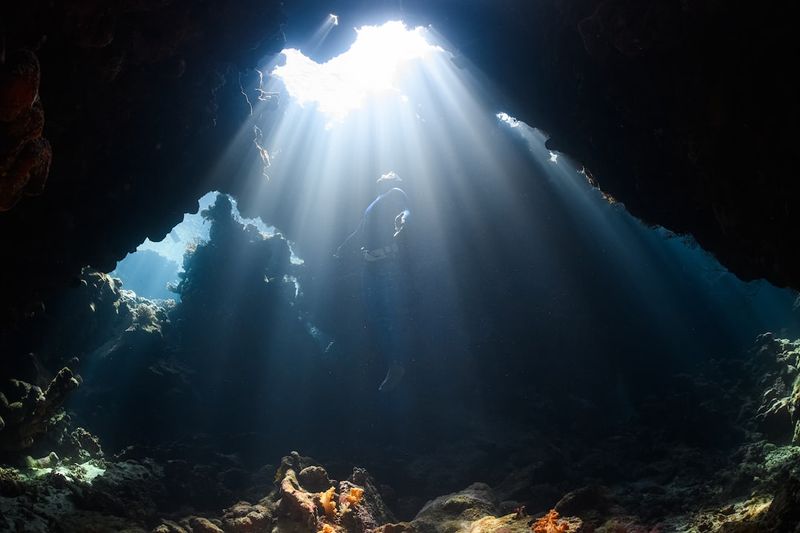Missing Titanic Submarine Raises Questions about Deep-Sea Exploration
In a race against time, search and rescue teams continue their desperate efforts to locate a submersible that disappeared while en route to the wreckage site of the Titanic. The submersible, named Titan, was carrying five people, including OceanGate CEO Stockton Rush, when it went missing in the remote waters of the North Atlantic Ocean. As the U.S. Coast Guard reported, the submersible has approximately 40 hours of breathable air left.
Challenges of the Search Operation
The search for the Titanic submarine is an incredibly complex and challenging operation. The remote area where the submersible vanished, approximately 435 miles south of St. John’s, Newfoundland, poses a significant obstacle to the search efforts. Rear Adm. John Mauger, commander of the First Coast Guard District, noted that the search area is difficult to access, and locating the submersible in such deep waters is an arduous task.
Experts have pointed out the potential technical complications that the submersible may be facing. Alistair Greig, a professor of marine engineering at University College London, explained that if the submersible has lost power, it would be floating on the surface. However, if it has sunk to the seabed, its chances of returning to the surface without assistance are severely limited. The depth of the search area further complicates matters, as there are only a few vessels capable of reaching such depths and no divers who can be deployed.
Philosophical Debates on Deep-Sea Exploration
This incident raises larger philosophical questions about the exploration of the deep sea and the ethical implications of conducting such operations. Deep-sea exploration, while fascinating and important for scientific progress, comes with inherent risks. As seen in this search and rescue operation, the potential for accidents or technical failures can have dire consequences.
When considering the ethics of deep-sea exploration, we must also examine the motivations behind it. The Titanic wreckage has been a site of immense fascination and public interest for over a century. However, treating such locations as mere tourist attractions raises concerns about the commodification and exploitation of maritime disasters.
The Role of Regulation and Safety Standards
One crucial aspect highlighted by this incident is the need for strict regulation and safety standards in deep-sea exploration. The submersible in question had not been approved or certified by any regulatory body, as noted by CBS News correspondent David Pogue. This lack of oversight presents significant risks to the individuals involved, as well as potential damage to the environment and historical artifacts.
Government agencies and international organizations should work together to establish comprehensive regulations and safety protocols for deep-sea exploration. These should include thorough examinations of equipment, certification processes for submersibles, and adequate emergency response plans. By implementing robust standards, we can help mitigate the risks associated with such ventures and protect the lives of those involved.
Editorial: Balancing Exploration and Responsibility
The disappearance of the Titanic submarine serves as a sobering reminder of the inherent risks in deep-sea exploration. While the pursuit of knowledge and discovery is commendable, it must be balanced with a sense of responsibility and caution.
As we push the boundaries of what is possible in exploring the depths of our oceans, it is crucial that we enact comprehensive regulations and safety measures to ensure the well-being of those involved and protect the delicate ecosystems we encounter. Deep-sea exploration should be driven by scientific inquiry and conservation rather than by purely commercial interests.
Moreover, we must carefully consider the ethical implications of treating maritime disasters as tourist attractions. Whenever we embark on expeditions to historically significant wreckages, we should approach them with sensitivity and respect for the lives lost and the families affected.
Advice: Proceeding with Caution
For individuals and organizations involved in deep-sea exploration, it is imperative to prioritize safety and responsible practices. Risk assessments, rigorous testing, and adherence to established safety standards must be integral to every expedition.
Furthermore, a commitment to transparency and cooperation with regulatory bodies is crucial to ensure the highest level of safety and accountability. By working closely with government agencies and international organizations, researchers and exploration companies can contribute to the development of comprehensive guidelines that promote both scientific progress and the protection of our oceans.
In conclusion, the search for the missing Titanic submarine highlights the challenges and risks associated with deep-sea exploration. It is an opportunity for us to reflect on the need for greater regulation, ethical considerations, and responsible practices to ensure the safety of individuals and the preservation of our fragile underwater environments.

<< photo by NEOM >>
The image is for illustrative purposes only and does not depict the actual situation.
You might want to read !
- Tragedy at Sea: The Mysterious Disappearance of a Titanic Tourist Submersible
- Tragedy at Sea: Uncovering the Identity of the Missing Submarine Passengers
- ‘Everlasting Thrills or Stale Sequel? An In-Depth Look at Mission Impossible—Dead Reckoning Part One’
- “Remembering the Legacy: Houston Mourns the Loss of Rapper and Icon Big Pokey”




